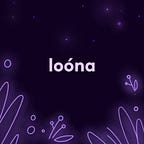Meditation and it’s value for sleep
What is meditation?
Meditation is all about training your mind to focus on a particular object, thought or activity. The aim is to reach mental clarity and emotional stability.
Meditation has been practised since antiquity, but it has been closely associated with religions like Hinduism and Buddhism. It’s only since the 19th century that these meditative techniques have gained widespread popularity beyond Asia.
Nowadays, ‘meditation’ encompasses a wide range of techniques. Traditionally, meditation aims at connecting you to your ‘deep inner Self’. To understand this authentic interpretation of meditation, you need to understand how Vedic science — a school of Hindu philosophy — views human consciousness in 3 distinct sections.
The deep inner Self activates the inner faculty, which then activates the physical body. This suggests that by consciously connecting to the deep inner Self through meditation, we can positively impact the physical body and our emotional state.
How can meditation improve sleep?
Sleep is a state of consciousness in which the so-called inner faculty can behave quite differently.
When we are dreaming, the inner faculty is aware of the inner dream world but not of the physical body. When we are in deep sleep, the inner faculty is dormant and isn’t aware of anything. As a result, feelings of duality — pleasure/pain, good/bad, etc. — are eliminated, so you don’t experience stress, anxiety, guilt, greed, envy or anger.
Meditation allows us to take the mind from the physical realm through the inner faculty and to the deep inner Self. By doing so we can access the unity of the deep inner Self, which we experience when we’re in a deep sleep.
There is scientific evidence to support the notion that meditation can help us to relax.
A 2015 study found that meditators experience a sense of inner unity that reduces stress, increases energy and positively impacts their health. This process happens subconsciously in the same way that muscles are automatically strengthened by the process of physical exercise. Interestingly, meditation was linked to an increase in melatonin (sleep hormone) levels.
A 2018 study found that type 2 diabetes mellitus patients who meditated 5 days a week for 4 weeks experienced less stress, anxiety and depression and improved sleep and quality of life. In fact, their sleep score increased by 32.7%.
A study that considered the impact of meditation on brain activity during non-REM (rapid eye movement) sleep revealed that meditation enhances our quality of sleep and improves our consolidation of memories.
It is important to note that the positive impacts of meditation are gained by those who practice meditation regularly for a sustained period of time. It would seem that the more you practise meditation, the more you benefit from meditation.
How does Loóna incorporate meditation into their sleepscapes?
Studies have tested a variety of meditation techniques including Cyclic Meditation — slowly alternating between different positions to stimulate and then relax muscles while focusing inwards with the eyes closed — Vipassana Meditation — a mindfulness-based practice — and Metta Meditation — a compassion-based meditation.
No one specific type of meditation has been identified as superior to others. Meditation has also been examined in combination with relaxation techniques and guided imagery with positive results for sleep quality.
At Loóna we use storytelling as part of our sleepscapes, which is more akin to guided imagery than traditional meditation.
Guided imagery does exactly what it says on the tin: a practitioner or audio recording guides the participant through a pleasant image. The aim is to generate feelings of calm, safety and nurturance.
Imagery provides a vessel for reframing emotions and changing the balance of the nervous system. This is probably because nonverbal images and the processing of emotions both occur in the same part of the brain. The link between the images and the processing of emotions is communicated to another part of the brain, which then produces an emotional and physiological response. The result is healing throughout the body.
Healing Light Guided Imagery — where participants are guided through a vision of light — has produced significant reductions in depressed mood and fatigue, and significant gains in physical and mental quality of life among patients suffering from multiple sclerosis. We know how much sleep can be inhibited by poor mental health, so these findings offer an encouraging connection between guided imagery and sleep quality.
Meditation and guided imagery are similar. So much so that the terms are often used interchangeably. The commonality between these two techniques is focusing on what it feels like simply to be present in your body. Arguably, guided imagery is a more creative way of meditating.
Loóna’s sleepscapes lead users through a story characterised by comforting and secure environments. Given that nature-based guided imagery has been found to be more effective at managing anxiety than other types of guided imagery, Loóna’s sleepscapes contain lots of natural features like gently blowing winds, animals and mythical creatures, plants and natural materials.
Download the Loóna app to explore all of the tranquil scenes on offer!
